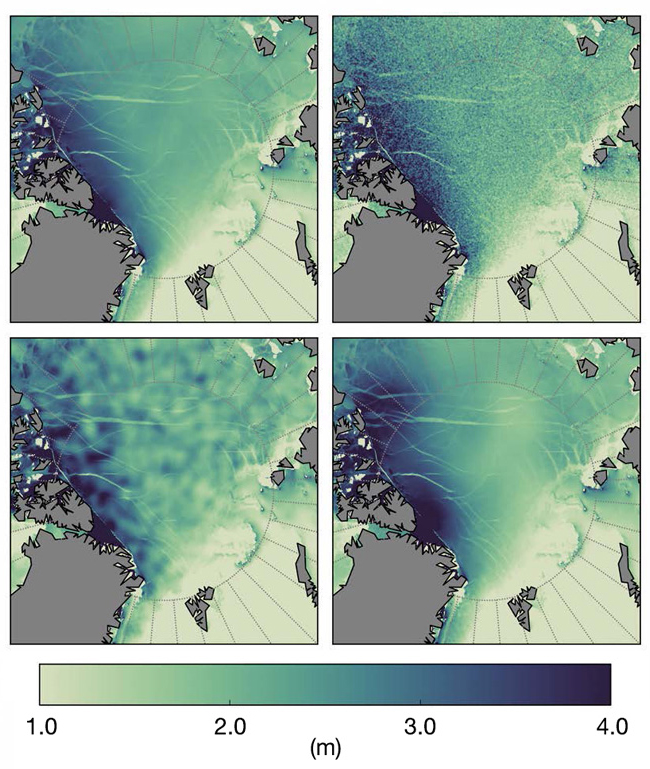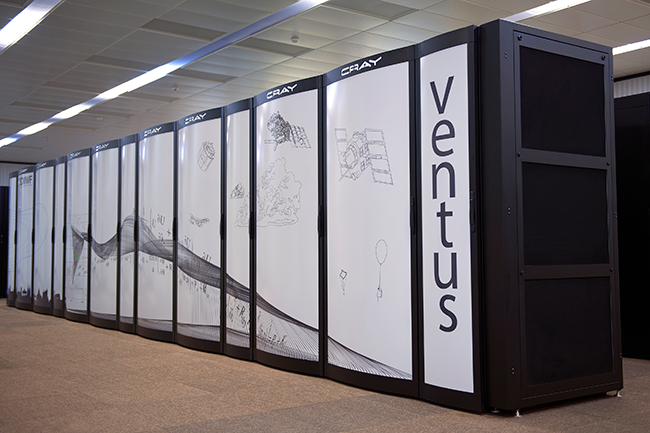

ECMWF makes supercomputer resources available to support innovative weather and climate research in its Member States. The deadline for applications under the Special Projects programme is 30 June.
Recent examples of Special Projects include investigations into the predictability of sea-ice conditions at very small scales; the influence of microphysical processes on the dynamics of weather systems; and perturbation strategies for the development of convection-permitting ensemble forecasting.
Twenty-five per cent of ECMWF’s supercomputing resources are allocated to the Centre’s Member States. Of these, up to 10 per cent are reserved for Special Projects. Between 70 and 100 Special Projects may be running at the Centre at any time.
Special Projects are the only part of the Member State supercomputer allocation which is subject to a review process by the Centre and its Scientific and Technical Advisory Committees.
They are defined as “experiments or investigations of a scientific or technical nature, undertaken by one or more Member States, likely to be of interest to the general scientific community”.
Special Projects give researchers access not just to a top high-performance computing facility but also to full user support.
Value to society
Special Projects can be used to push the boundaries of what is possible.
A project currently under way is investigating the predictability of sea-ice conditions down to very small scales of metres and hours.

Initial perturbed sea-ice thickness used to analyse the sensitivity of predictability to idealised initial perturbations and to growing uncertainty of the atmospheric forcing caused by the chaotic nature of the atmosphere. The plots are from a progress report on the Special Project on ‘Potential sea-ice predictability with a high-resolution Arctic sea-ice–ocean model’. (Image: Mahdi Mohammadi-Aragh)
“Knowing sea-ice conditions is becoming increasingly important for Arctic marine operations, but traditional ice-state variables such as sea-ice thickness and concentration currently provide only crude guidelines,” Martin Losch from the Alfred Wegener Institute, Germany, said in his Special Project application.
He and his fellow researchers are running ensemble simulations with a coupled sea-ice–ocean model to explore the predictability of dynamic sea-ice fractures at very high resolution.
Special Projects can also involve collaboration between scientists at ECMWF and elsewhere.
An example is an ongoing project run by Maxi Boettcher and Hanna Joos from the ETH Zurich on the impact of microphysical processes on the dynamics of mid-latitude weather systems.
ECMWF scientist Richard Forbes is collaborating on the project, which has already given rise to a publication in the Quarterly Journal of the Royal Meteorological Society.
Some Special Projects are closely linked to operational numerical weather prediction in ECMWF’s Member States.
A recent project led by Italian scientist Chiara Marsigli from the Hydro-Meteorological-Climate Service of the Emilia-Romagna region (ARPA-SIMC) is an example.
It investigated perturbation strategies for convection-permitting ensemble forecasting.
The research built on earlier work for the COSMO consortium for small-scale modelling, which brings together eight national meteorological services.
“The project has made it possible to define the operational setup of the COSMO-IT-EPS ensemble,” says Dr Marsigli. “Further investigations will enable us to run the operational ensemble with the best combination of initial conditions and model perturbations.”
Lists of all current and closed projects can be viewed on the ECMWF website.
For more information on the Special Projects programme, please visit the Special Project application page.

ECMWF’s high-performance computing facility comprises two Cray XC40 clusters. A quarter of supercomputing resources is made available to the Centre’s Member States, and up to 10 per cent of this allocation is reserved for Special Projects.
